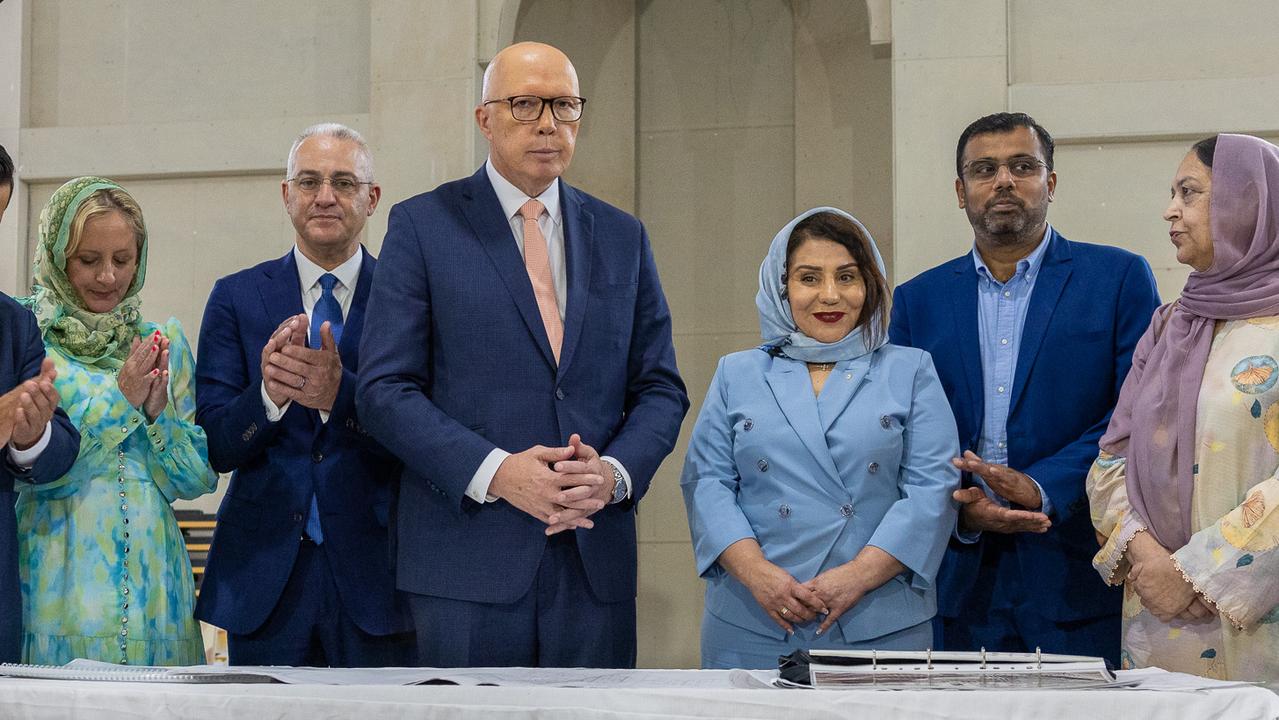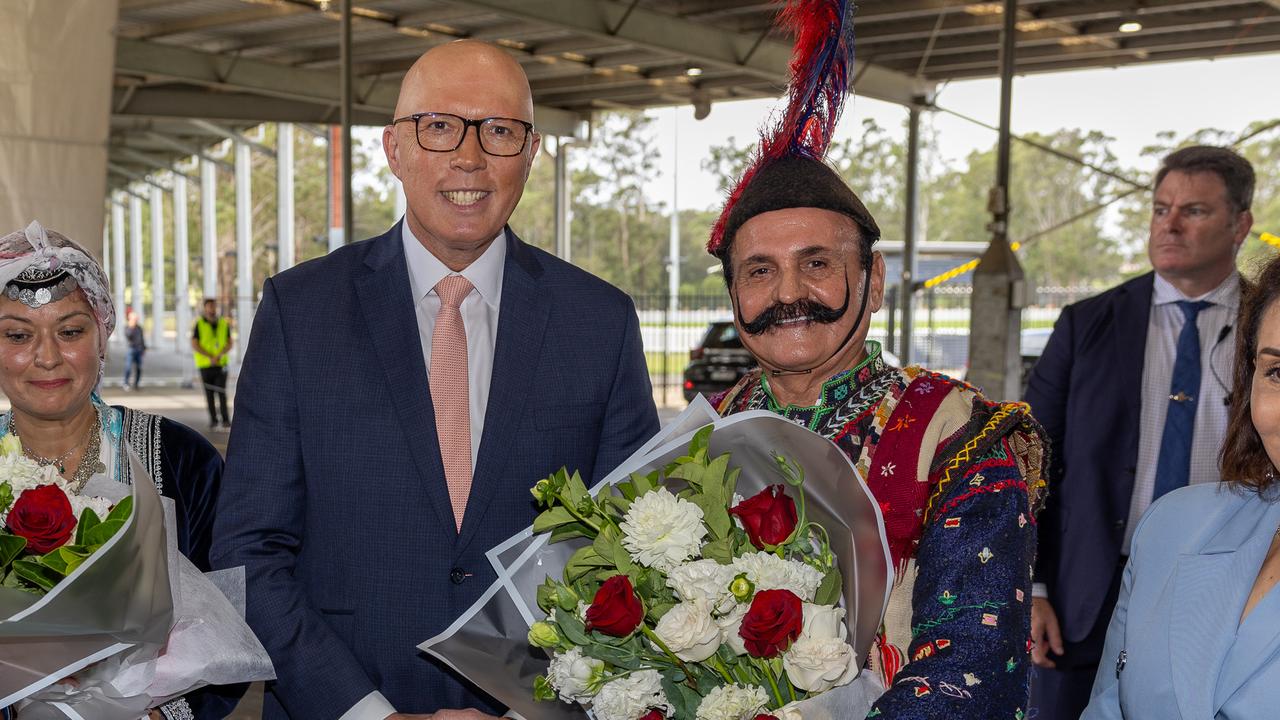A Taliban bomb cost Commando Damien Thomlinson his legs but it didn’t stop him walking Kokoda
Commando Damien Thomlinson was behind the wheel of a non-armoured patrol vehicle deep in Taliban territory in Afghanistan when it drove over a bomb. The explosion tore his right leg off mid-thigh, severing his femoral artery, his left foot hung by a thread. Despite their own horrific injuries, his medic mates saved his life and he later hiked the Kokoda Track.
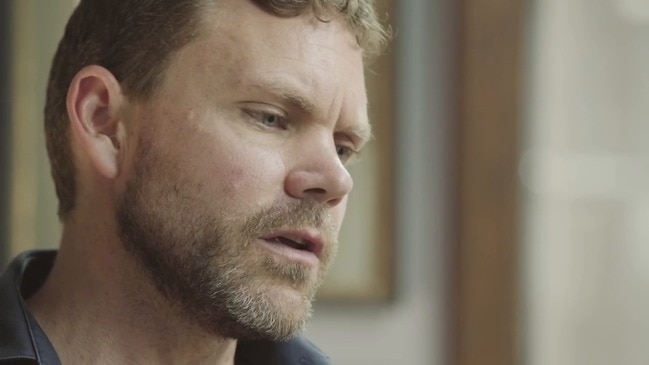
Following the phenomenal success of the groundbreaking documentary series Voodoo Medics, The Daily Telegraph is bringing you War Stories — powerful tales of courage and heroism — with exclusive book extracts from the frontline. This is the story of how Damien Thomlinson survived horrific injuries and the loss of his legs in a bomb explosion and went on the conquer the Kokoda Track.
Damien Thomlinson is a young man whose life was changed in one violent instant on a dusty track a long way from home.
The tall, blond-haired, blue-eyed surfer from the NSW Central Coast was on patrol with his mates from the 2nd Commando Regiment in Oruzgan province, Afghanistan, in April 2009 when an insurgent bomb shattered his body.
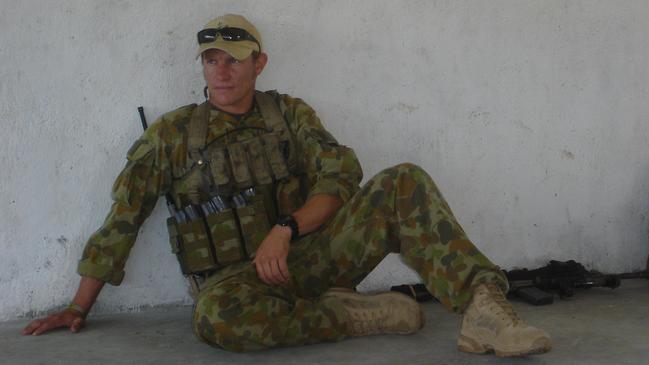
READ MORE:
WAR STORIES: How Mark Donaldson dodged death, twice
WAR STORIES: How Mark Donaldson earned a VC
Few manifestations of courage are as inspiring or emotional as a gravely wounded soldier who overcomes horrendous injuries inflicted by an unseen enemy.
Thomlinson joined the special forces in 2005 under a direct entry scheme.
This allowed men with the physical and mental attributes required to join the Commandos without having to serve the normal “apprenticeship” in a regular army battalion.
Applicants still have to pass basic and advanced infantry training to qualify to join a Commando regiment, but they don’t have to serve the usual several years “internship” as a foot slogger in a battalion.
He is not sure what attracted him to the army’s elite band of warriors, but as a 24-year-old male who had always been good at sport he regarded it as a challenge.
His family and many of his friends were mystified but their doubts evaporated once he set his mind to the task.
Military service was always in the background of the young man’s life. Both his grandfathers served during World War II, and a great-grandfather fought in World War I.
“It was something that I think was always an option when I was looking for a secure type of job,” he says.
“I noticed a recruitment scheme while I was looking for things on the internet and from there I decided I would be more than happy to give it a crack. It was something I thought I would be suited to, but not many people that I ran it by thought that I was suited to in any way whatsoever, but I thought I was and I was willing to give it a go.
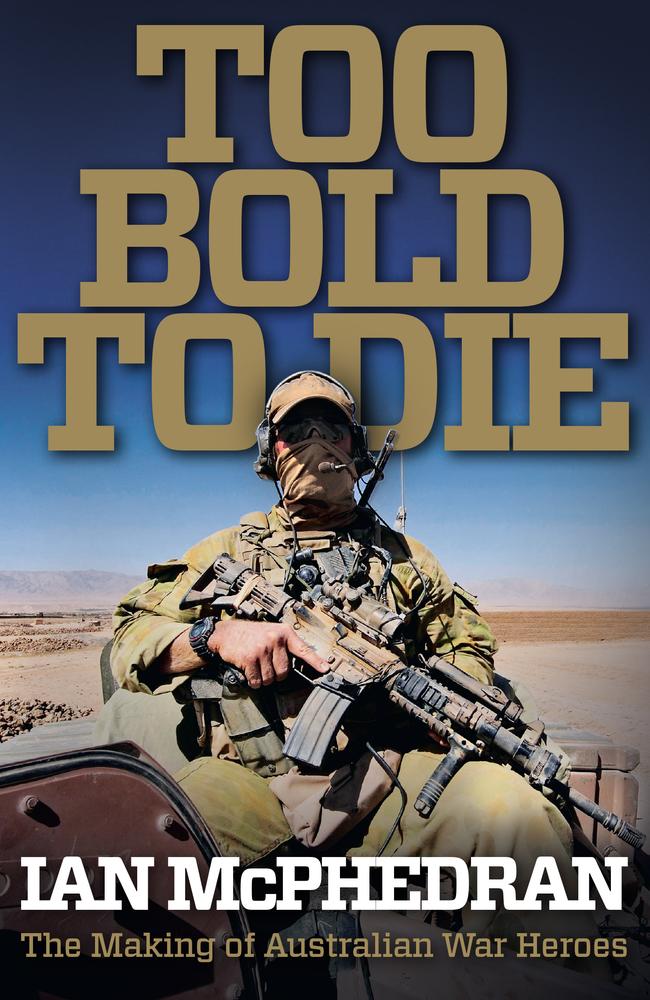
“I didn’t think the physical aspect was going to be too dramatic to get through, it was always going to be more the mental side, so when it’s one of those type of challenges it takes it into a different sort of ballpark.”
While his parents’ reaction was more of a nervous laugh than a shriek of horror, many of his mates understood and respected where he was going with his life.
“They saw a different side of it, they saw me training, they saw me not drinking as much when we were out, all the little things to try and make the pieces fall in, whereas my parents still saw this kid running around breaking stuff.”
He made it through the tough selection process and, after his initial training, was posted to the 2nd Commando Regiment at Holsworthy to undertake reinforcement, or “reo”, training before he joined an operational company.
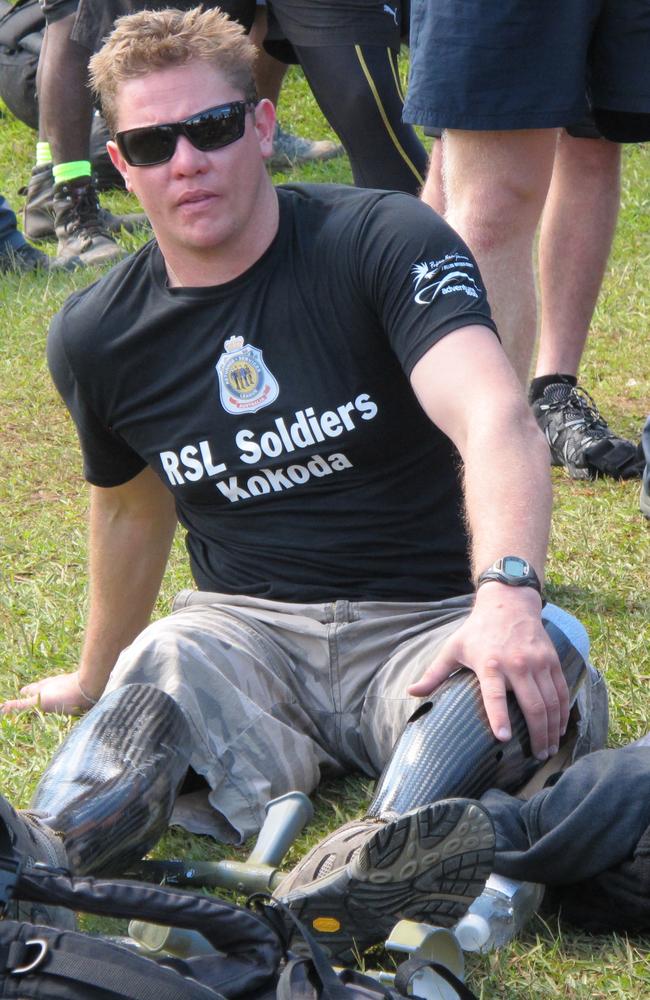
MORE:
How the Voodoo Medics got their name
Private pain of an Aussie warrior
After operational deployments to Fiji on HMAS Kanimbla and to East Timor, Thomlinson arrived in Tarin Kowt in Afghanistan in March 2009.
“I was pretty excited to be there. I mean, you train for so long and you train so hard for it,” he says. “It was the focus of the entire year before our deployment. It was entirely focused on what we were going to do when we got over there. There was an overwhelming sense to be finally there, I guess.”
About three weeks later, his troop left the Special Operations Task Group base at Camp Russell for a disruption operation targeting enemy commanders deep inside “tiger country”.
Thomlinson was driving an open, non-armoured patrol vehicle when the driver’s side front wheel detonated a large improvised explosive device.
With no memory of the explosion, he has only pieced together what happened via the recollections of his mates on patrol with him that day.
“My memory stops at some stage in the days prior,” he says. “I did look up at one stage (in hospital) and see someone who wasn’t actually out in the field with us and I asked him what he was doing there, but then I passed out.”
He is not sure if the memory loss is related to the heavy nerve treatment he received to deal with massive trauma or whether it is linked to the concussion he sustained from the huge explosion. Either way his memory is wiped, and it is probably just as well.
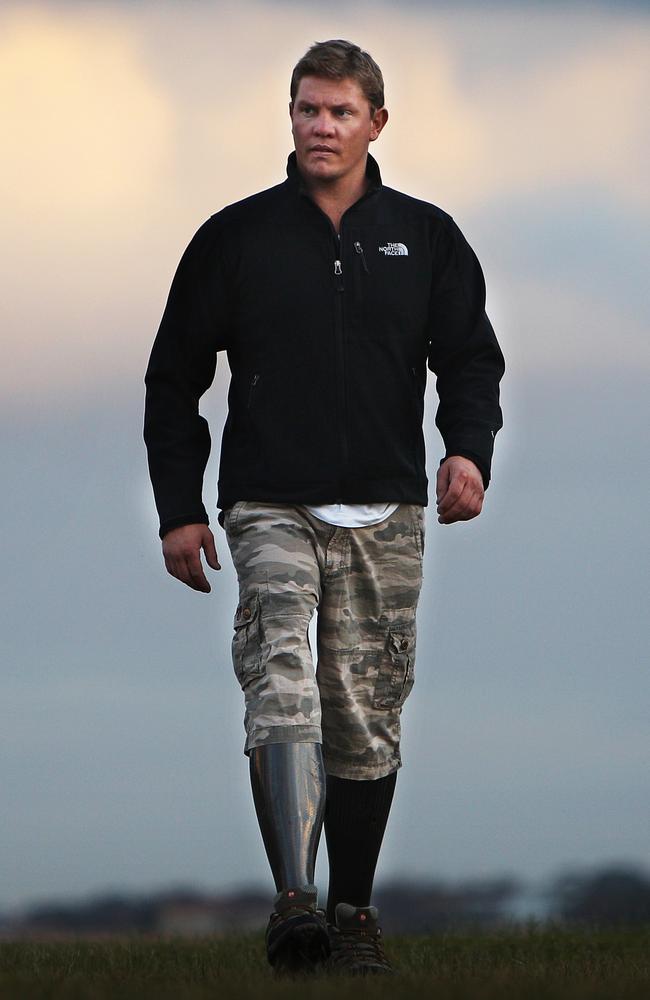
But long discussions with his mates, especially the ones who saved his life on the dusty battlefield, not only allowed Thomlinson to piece together some of the detail of what happened, but was important therapy for those soldiers as well.
“I wanted to be as much a part of the recuperation that they were going to require. So having them talk about it, sitting there listening to them talk about it I think was a big thing for me. The only information I really got about what happened, about any of the events, has come from the guys around me.”
The explosion tore his right leg off about two-thirds of the way up the femur and his left foot was literally hanging by a thread. Both his arms were fractured and he had a broken nose and torn mouth, but it was the damage to the right leg and the blood gushing from his severed femoral artery that was causing most concern as his mates moved quickly, despite their own injuries, to administer combat first aid.
Their own injuries included a perforated eardrum and a serious leg gash, but they instinctively fell back on their combat first-aid training and applied tourniquets high up on his thigh to stem the flow of blood.
Black humour is a vital defence mechanism during trauma on the battlefield, so there were some comments made about protecting his “family jewels” as they applied the custom-made battlefield tourniquets to stop the bleeding.
His left foot was still attached, but X-rays at the field hospital showed that most of the bones in the lower leg had been pulped, forcing doctors to amputate the leg below the knee.
The only reason Thomlinson is still alive today is because of the standard of first aid administered to him, firstly by his wounded comrades and then by the highly trained combat first aiders who kept him breathing until the medevac chopper arrived to fly him to a British field hospital.
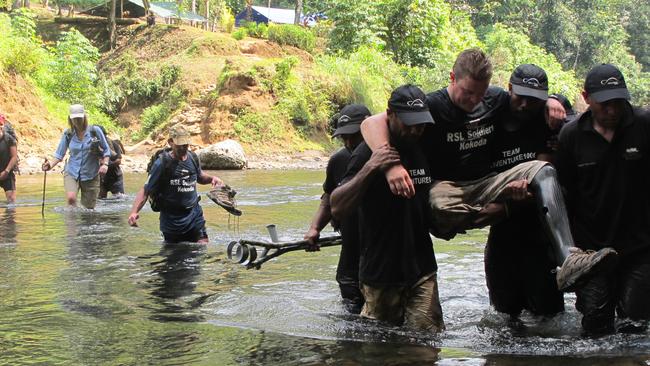
MORE:
PODCAST: ‘I’d go back if I was asked’ — Mark Donaldson
PODCAST: The Voodoo Medic who saved a hero cop
He can’t speak highly enough of the soldiers who applied that crucial first aid.
“You have to be really good at what you do, to be able to deal with something like that,” he says. “Let’s face it, you can’t train anyone to see one of their mates that they’ve spent the last year in the build-up cycle with, have half of him sitting on the ground next to you and then be able to switch straight into the mindset of ‘Let’s make this work and make this happen.’ I mean it is a really critical time, early.”
Adding to the pressure was the fact that it was a night mission, so they were working on him in the dark.
Time is of the essence for badly wounded battle casualties and Thomlinson’s initial treatment and rapid evacuation within the “golden hour” — the first hour after injury — undoubtedly saved his life.
Such was the extent of his wounds that during his first emergency operation at the trauma unit at Camp Bastion, the main British base in nearby Helmand province, he required six times the volume of blood normally carried by a human being just to stay alive.
By the time of his second surgery at Bastion his condition was so critical that if the operation had been unable to repair him adequately for the long plane journey to Landstuhl Regional Medical Center in Germany then, he says, his life support system would have been switched off.
His first memory after the incident was waking up in Ramstein and seeing an enormous frame around his right arm. The arm injury alone was very serious — the elbow, the radius and ulna were all broken and the humerus was in about six pieces. The arm had a plate running its entire length to hold all the repairs together.
His time in Germany was a haze of heavy painkillers and surgery, so the full extent of his injuries did not become clear to him until after he arrived home in Sydney and was admitted to the intensive care unit of a private hospital.
His parents and his partner, Brazilian biochemist Tisha Agostini, worked around the clock in shifts to sit by the bed and operate his morphine machine so he could rest.
“Otherwise I’d wake up basically I think every ten minutes, so they had it down to a little timed situation where they would sit up next to me and push the button for me. I mean they’ve been just awesomely supportive.”
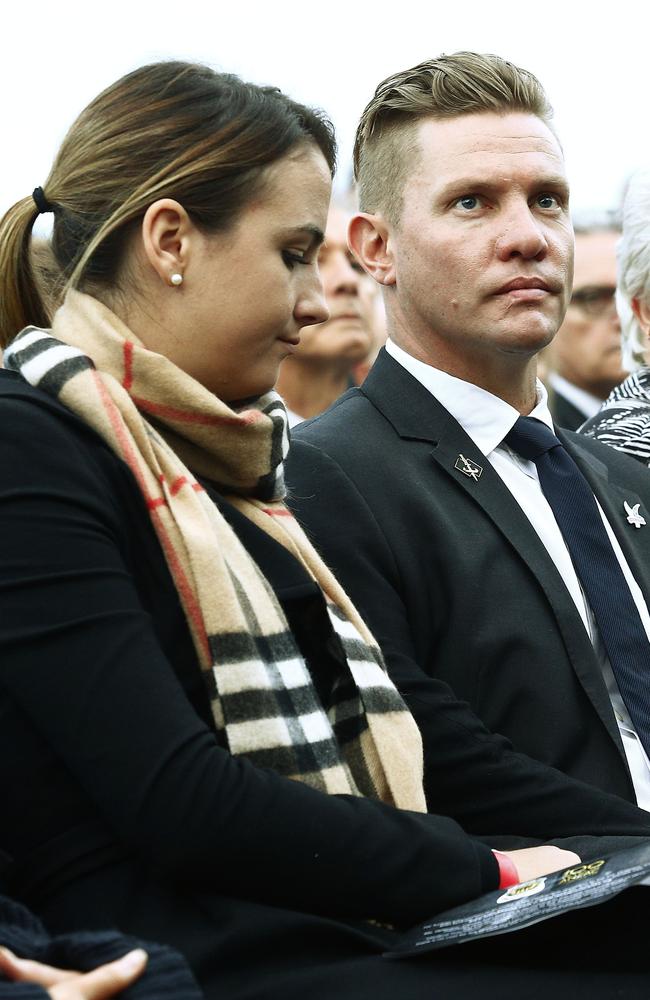
Soon after he arrived home, Thomlinson set himself his first goal: to be standing on the airport tarmac to greet his mates when they returned home from duty in Afghanistan.
“The first thing that I wanted them to see when they got off the plane was me standing there. There is no better message,” he says.
“Anyone can tell you that he’s doing really well, anyone can tell you that, but until you have seen it with your own eyes it is not one of those things you take as seriously. So I thought it was most important that I am there standing for the whole team when they get off that plane, that’s the first thing they see.”
That was a huge motivating factor as he recovered to the point where he could be fitted with prosthetic legs.
“The initial part of the rehabilitation was all about getting on the legs and making them work, having everything function well enough so that I could be there,” he says. “I mean, eight weeks after the hit I was standing and walking on both legs. That’s fair motivation for the guys that I had been that close to for that long.”
The homecoming was a huge day for Thomlinson. The Special Operations Commander, Major General Tim McOwan, stood beside him at Sydney airport as the commandos filed off the charter jet. McOwan says that as the aircraft came to a stop, Thomlinson was so nervous he could barely stay upright.
“He wasn’t sure how they would receive him. He was concerned about the fact that he thought he had left his mates behind in the battle,” McOwan says.
The young soldier needn’t have worried: his presence at the airport was a great surprise and an inspiration to the returning warriors. He stood there to greet every single person who left the plane, and each one shook his hand with a beaming smile. His team members hugged him and almost dragged him off his new legs.
“I think everyone who was there was really happy to see me there,” he recalls. “It was a really, really good experience for me, I think, and a good experience for them. Speaking to them afterwards they said that it really did help everyone that was involved, so that makes it, makes all the effort worth it when you get a pay-off like that.”
By December 2009, he was back working two days a week in the development cell with the Commando Regiment at Holsworthy Barracks.
“Coming in and getting out of the cycle of having to stay at home, which, as appetising as it sounds to some people, really isn’t that flavoursome after an amount of time, it was a big thing, a good mental step for my recovery to be back at work and seeing everyone that’s around me,” he says.
His return to work became the focus of his rehabilitation. In the safe and private world of Commando headquarters he was able to get back as close to normal as was possible under the circumstances.
In late 2010 Thomlinson got a call from Ray Palmer in Queensland, whose son Scott had been killed in a helicopter crash in Afghanistan in June 2010. Palmer had been on patrol in April 2009 and was one of the first on the scene after the blast that hit Thomlinson.
In July 2011 Thomlinson told Sydney’s Daily Telegraph that Scott had phoned his dad and told him he didn’t think ‘Thommo’ was going to make it. Palmer senior told his son’s mate that he and Scott had always planned to walk the Kokoda Track in Papua New Guinea and he wondered if Thomlinson might join him for the trek.
It comes as no surprise that Thomlinson completed the arduous walk across some of the toughest and most infamous mountain country on earth. By that stage of his recovery he was so adept at getting about on his man-made legs that he walked with an unusual gait but only a slight limp.
During the trek a stranger asked him if he had twisted his ankle playing footy.
“No, drove over a bomb,” came the reply.
The stranger laughed. “Seriously, twist your ankle playing footy?”
“No, seriously,” he replied. “Drove over a bomb.”
By early 2012, it had become apparent to Damien Thomlinson that his army career was over. He had already developed a new life and had become an inspiration to tens of thousands of Australians through his many activities, including driving a rally car for charity, walking the Kokoda Track and fundraising for the Commando Trust Fund.
In April the keen snowboarder received a call from the Australian Winter Paralympics coach with an offer to try out for the Winter Games in Russia in 2014. After discussing it with Tisha, he decided to give it a go.
His training schedule includes daily swims at Bondi Icebergs near their Sydney home.
Early in 2013 he packed his special “snow legs” and snowboard and went to Utah in the US to begin his bid for Olympic glory.
No one who knows this courageous former soldier would be silly enough to bet against him.
Too Bold to Die by Ian McPhedran is published by Harper Collins.

